Brand spanking new Dolsot
The salt rub, I wet the dolsot and then scrubbed it with salt, I did this a couple of times to clear it of any dust or dirt from manufacture. You cannot, ever, use soap on a dolsot.
Salt-scrubbed Dolsot
Then I boiled it in salty water, to clear the pores and slowly heat it up for both sanitizing and prepration for seasoing. I boiled it for 30 minutes.
Mmm, boiled Dolsot
I then placed the dolcot into the oven, preheated to 350F, for 10 minutes, took it out and brushed it with sesame oil. The oil was applied twice more over a 2 hour period. I then removed it, wiped it off and back into the oven for another 30 minutes. Yes, it took a while. I have found with cast iron, doing the first seasoning slowly and thoroughly makes it a lot easier to maintain. I am assuming this is true with dolsot as well.
Ready to Cook!
I allowed it to cool to warm and wiped it down one more time. It has a nice sheen and a darker color. The feel is one of oiled stone, not gummy cooking oil. As a one time stone carver, I love that feel of oil-finished stone.
Once this was all done, I was ready to cook. I preheated the dolsot in a 400F oven. Meanwhile I prepared various items for addition to the dolsot. Cooked rice, which I added a little duck fat to. Some smoked chicken soaked in a shiitake pork broth, some shiitake mushrooms, leftover kim chi pancake, some blanched kale and some braised onion.
Smoked Chicken, Shiitake, Onion, Kimchijeon
I like to massage the kale, rather heavily, to break down the fibers, this makes the blancing go faster and I don't love the color. I don't care for the color and texture of long cooked greens as a rule, if I can find a way to shorten the cook time, I will go for that. Done right, the kale can actually be eaten raw or pickled in slaw this way.
Yep, it is tender, and that green
Pretty much from here, it is all about assembly. I oiled the dolsot interior with a quick brushing of sesame oil. I had some hot rice, in this case short-grained Korean rice, which I mixed in a little duck fat and shiitake and pork broth into. This was lightly pressed into the hot dolsot. Then ingredients were assembled on the rice.
Lidded and back into the oven for a few minutes. Everything was already cooked and just needed to heat through and give the rice a chance to crisp on the bottom. Ijust took a guess and removed it after about 15 minutes, which was not quite long enough.
Done and cooked, ready to mix
De-lidded and mixed to make sure the crispy crust of rice is blended into the mix of meat and vegetables, then served. The timing was not quite right, didn't quite get the crispy crust I was hoping for, just bits and pieces of it. Next time for sure, the great thing though, the texture of all the ingredients was terrific and I can see where it can be used in the live fire cookers as well.
Mixed and Served
Oh, an ale made the trip to the table as well, I brewed a Antwerpen clone ale from a recipe given to me by a friend that works out great. The head poured a little too deep, I had to spoon a little off to finsih the pour. What a great head retention and flavor recipe.
Anterpen Ale
Pork and Shiitake Broth:
1/8 cup shoyu (Japanese soy sauce)
1/8 cup Red Boat Fish Sauce
4 dried shiitake mushrooms
5 thin slices of ginger
1 clove garlic
1 teaspoon turbinado sugar
1/2 cup pork broth
1/2 cup water
Bring all liquid ingredients to boil reduce heat and simmer shiitake until just soft. Remove from broth. Add onions and simmer until just soft, not fully translucent. Remove and add giner and 1 clove garlic. Remove after 10 minutes. Reduce at a boil until reduced by half of original volume. This broth is salthy, sweet and loaded with umami, it is a great accent to many foods.

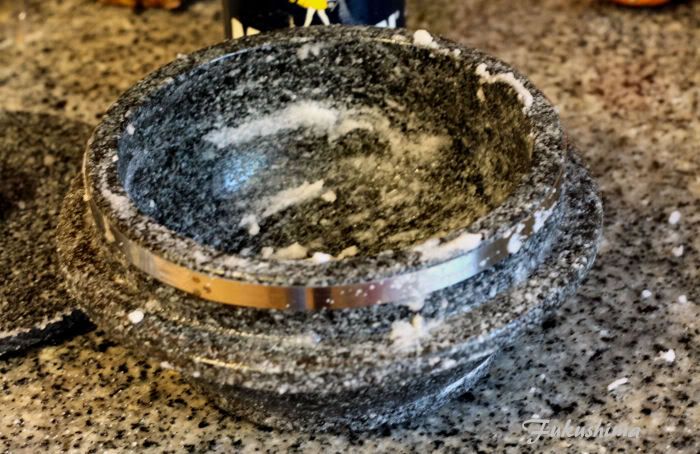
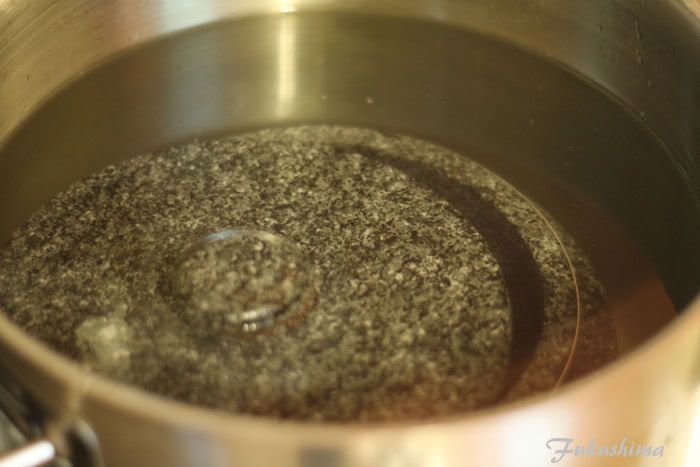
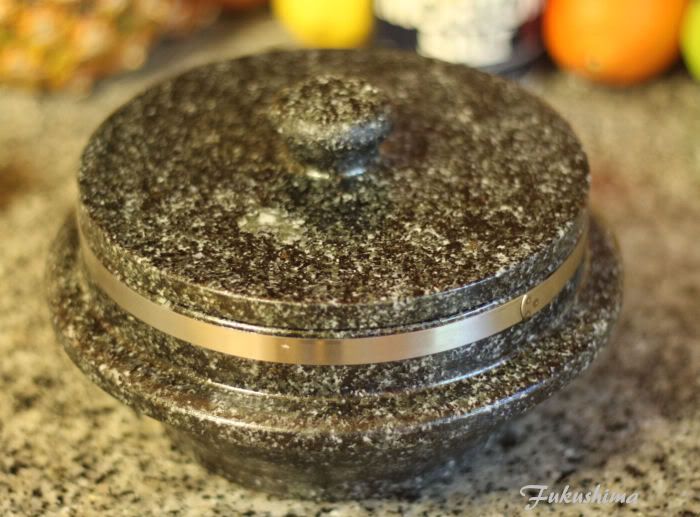
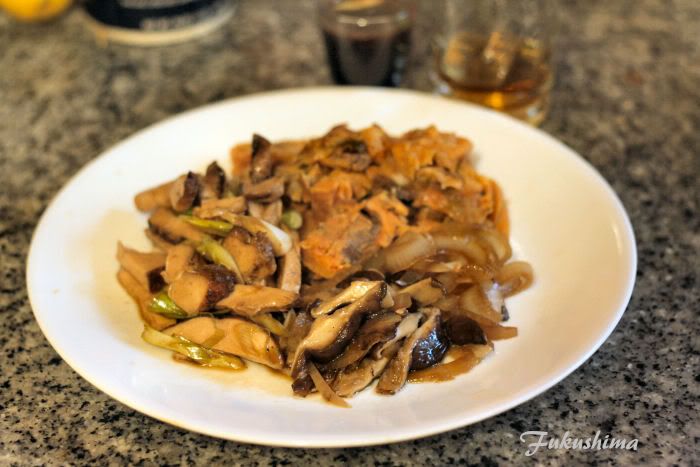

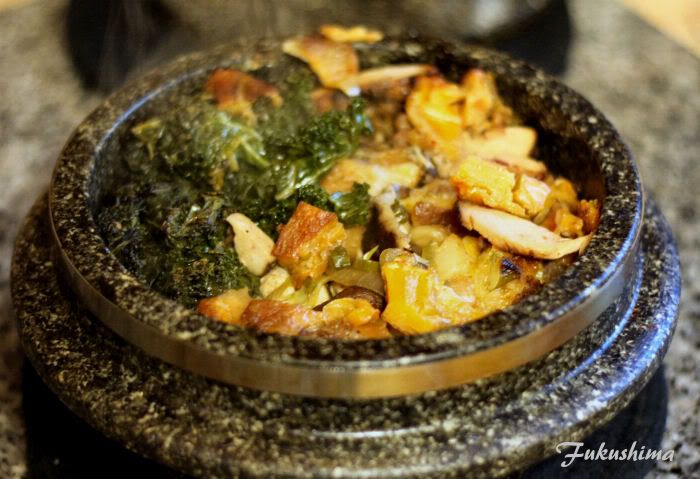
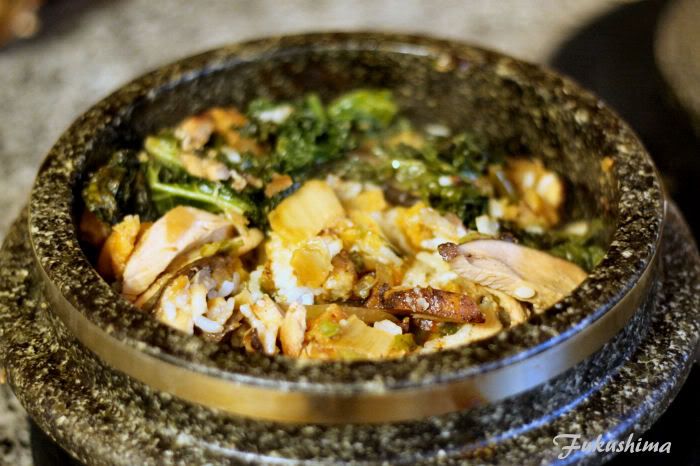
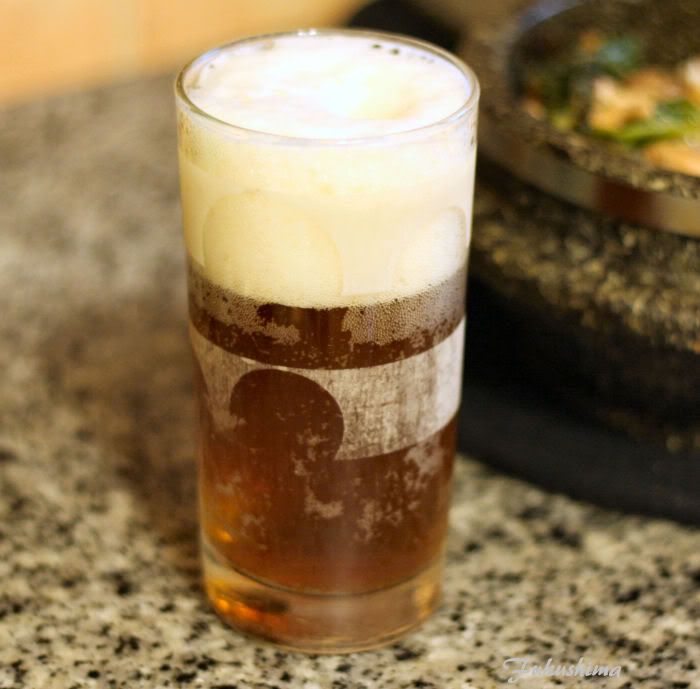
Brilliant run through Bob, thanks!
ReplyDeleteBob, why can't soap be used for a dolsot? Does the stone retain the soap flavor? And why does it get so much darker?
ReplyDeleteThe stone a dolsot is made from is quite porous, if you apply soap, it cannot be fully rinsed. It will absorb and flavor the stone. It gets darker as the new dolsot is raw stone, once you season it, the oil effectively makes it look wet. Of course, as you use it, the oils in the stone will age and darken it even more. Eventually, they take on the nearly black color commonly seen in older stone pots.
ReplyDeleteThanks for the info on how to take prepare one of these on an inaugural run. This looks like a great cook and it is good to hear all the ingredients maintained moisture and texture through the cook. I'm sure you will dial in the magical crispness on the rice. Do you think you need higher temperature, drier rice, longer cook, or more fat to nail it?
ReplyDelete